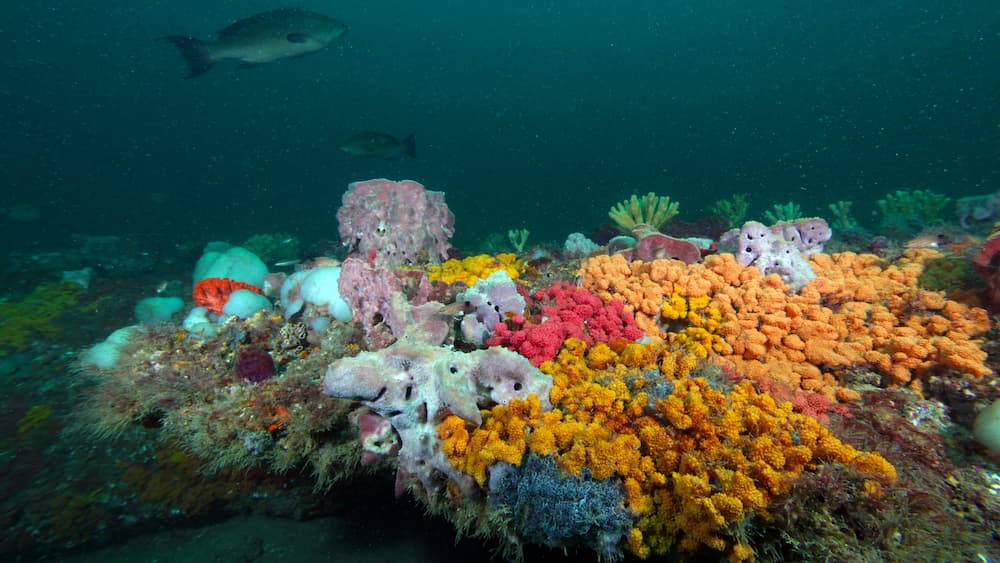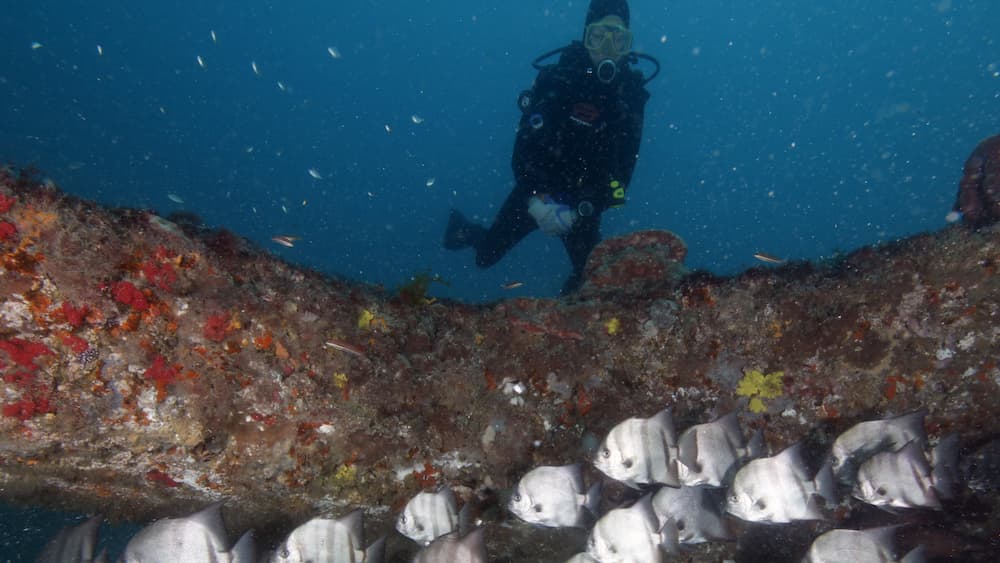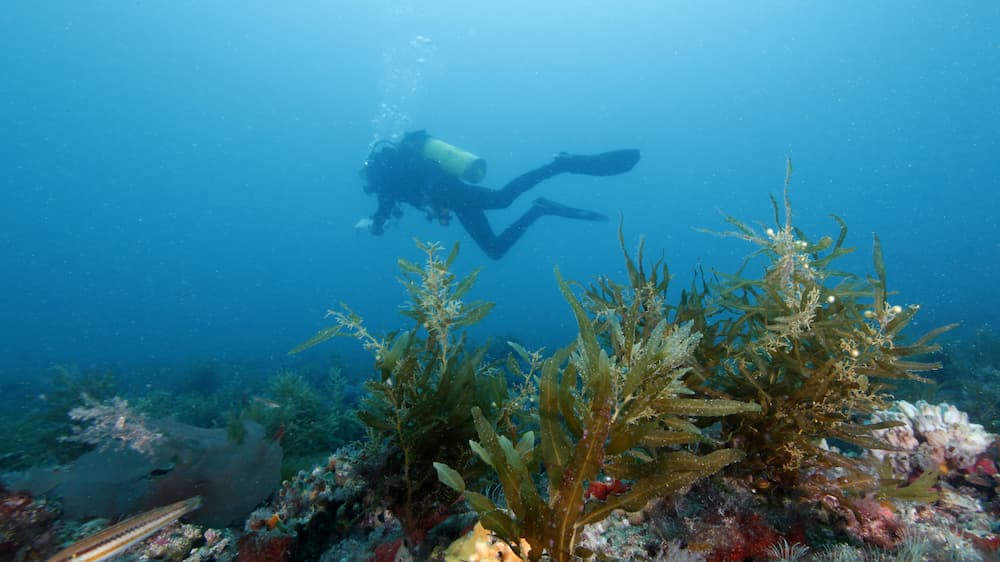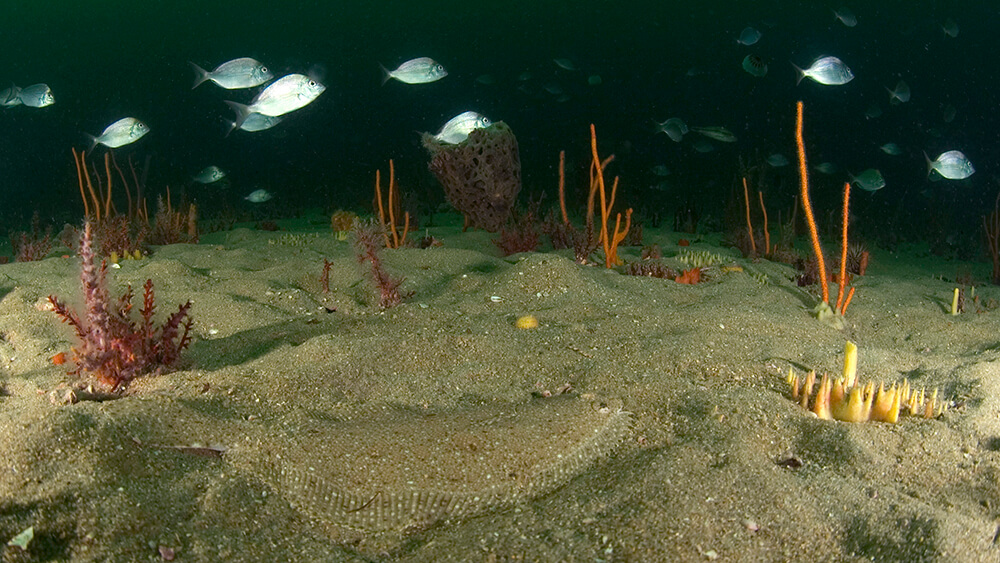Habitat

Gray's Reef is a live-bottom reef off the coast of Georgia. "Live bottom" refers to the dense carpet of living creatures on the seafloor, attracting soft corals, sponges, sea squirts, and other organisms that build the reef ecosystem. The bedrock and ledges of the reef are made of sandstone—sand that has compressed over time.
Gray's Reef National Marine Sanctuary has three types of seafloor habitat commonly found in waters of the Southeast: high-relief ledges, low-relief live bottom, and sandy bottom.
High relief ledges

Scattered outcroppings and ledges provide homes for an abundance of diverse marine life. Crabs, sea stars, soft corals, octopuses, sponges, urchins, and thousands of other creatures blanket the nooks and crannies of Gray's Reef. Some ledges rise up to six feet above the hard-bottom seafloor of the nearly flat continental shelf. Undercuts on the ledges provide a place to rest and avoid predators for sharks, turtles and fishes.
Low-relief seafloor

The more common live-bottom habitat in Gray's Reef and surrounding areas has low relief made of sandstone rock and exposed hardened seafloor. The hard surfaces provide attachment points for sponges, soft corals, algae, and tunicates. The cover provided by this attached marine life hosts mobile invertebrates and fishes.
Sand

A majority of the sanctuary is sandy bottom. There are fewer organisms providing structure above the surface, but below the seafloor lives a diverse community of worms, shells, clams, crustaceans, and anemones. The community they create is rarely seen by divers, but provides a key role in keeping the seafloor free of natural debris and contaminants.
Open water

The waters above the live-bottom habitats of Gray's Reef National Marine Sanctuary host plankton, jellies, and fishes. The water quality moving through the sanctuary depends on river runoff, tidal currents, and the Gulf stream.

